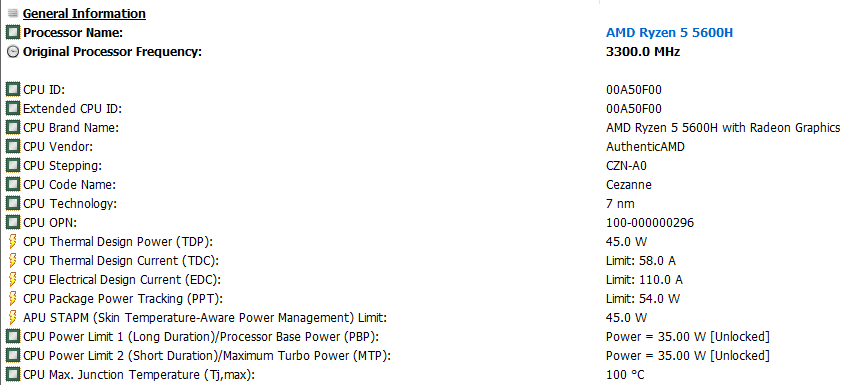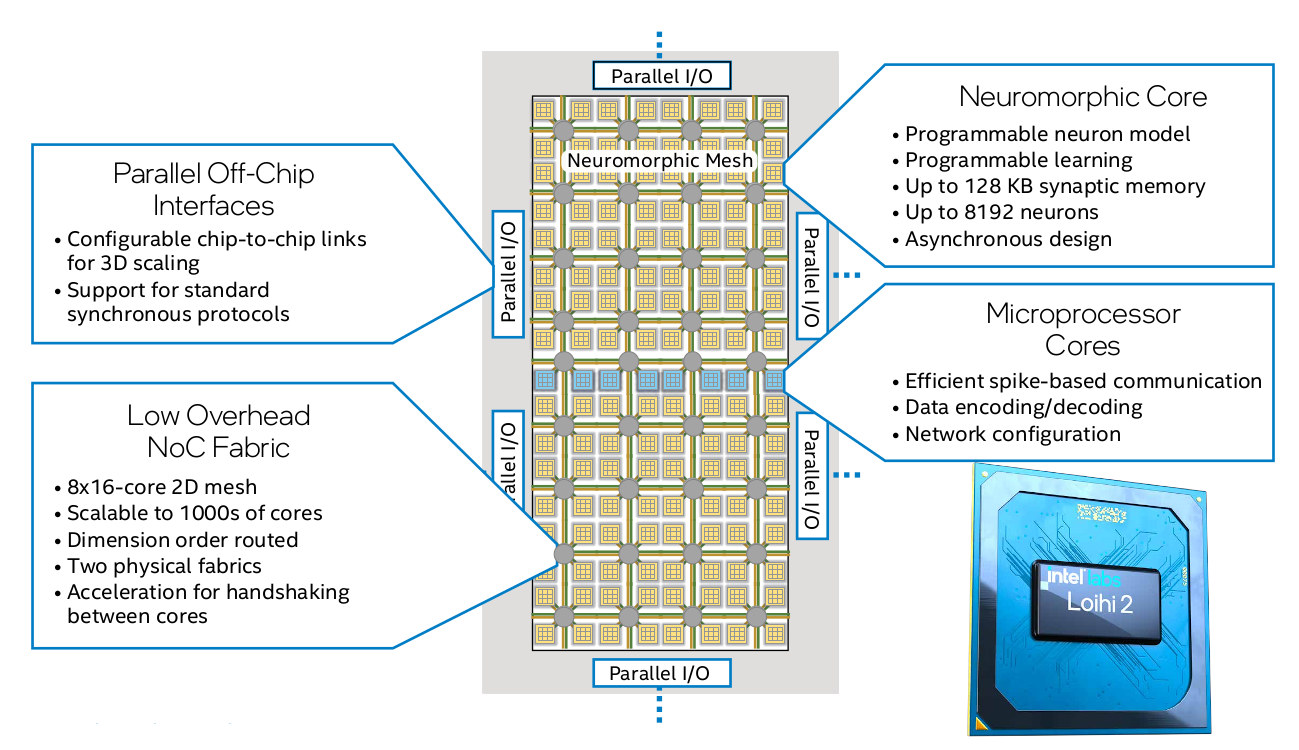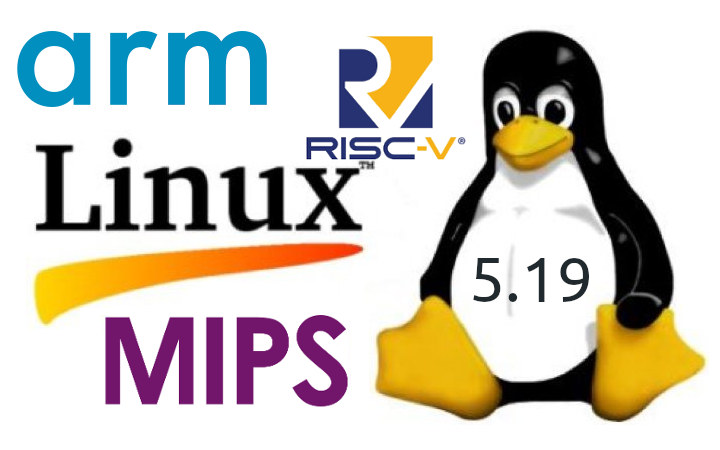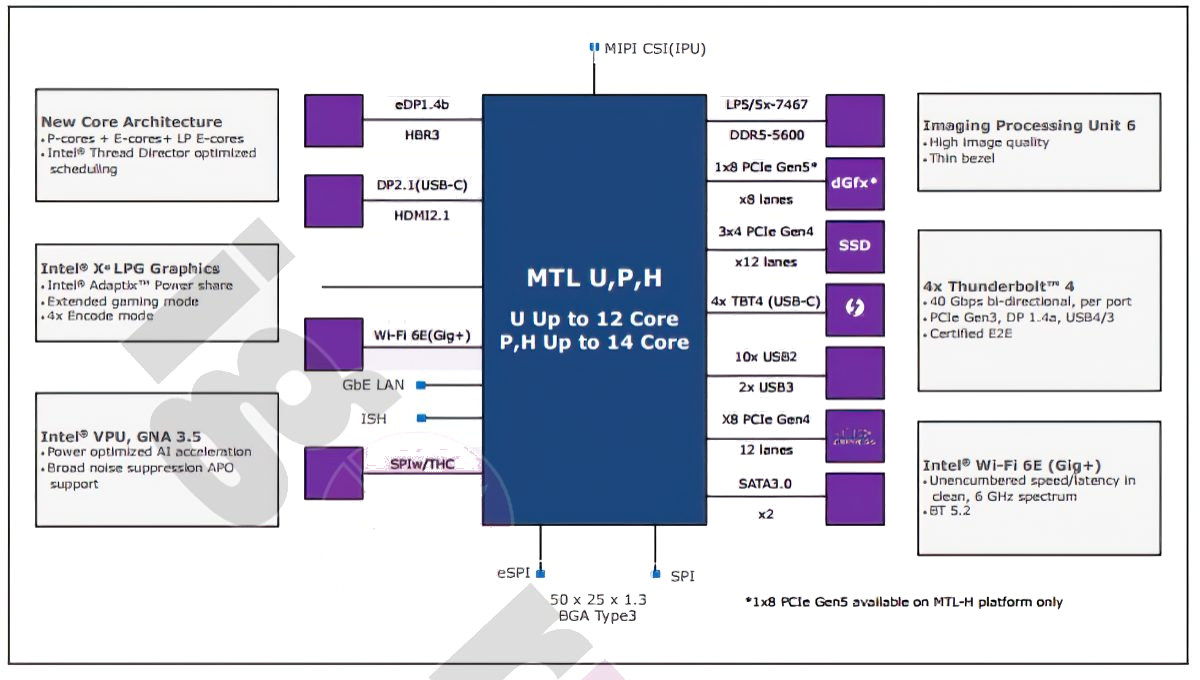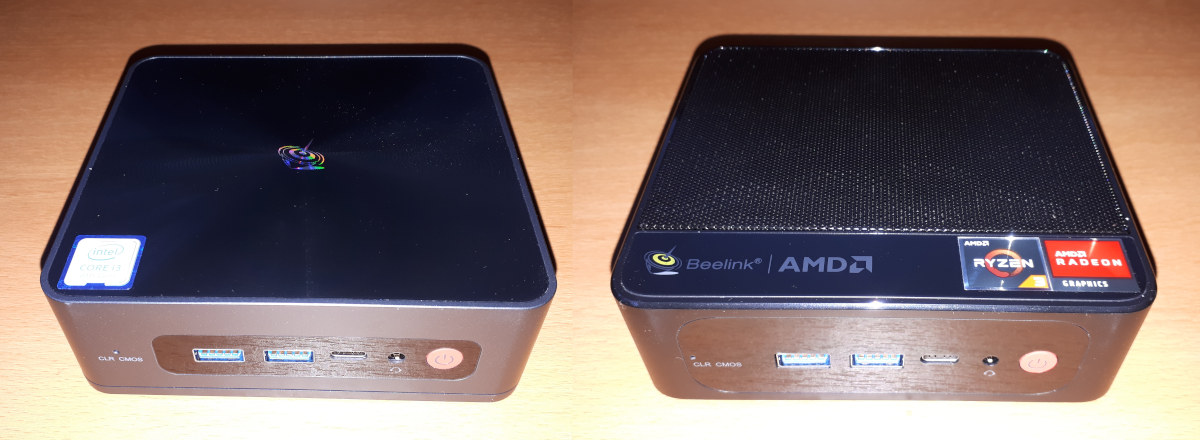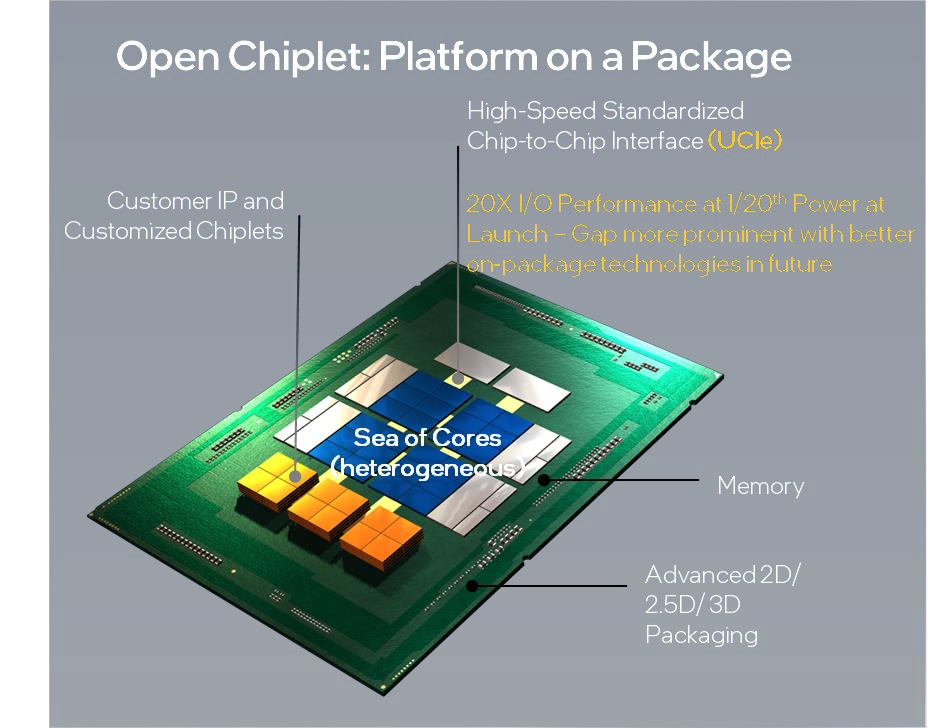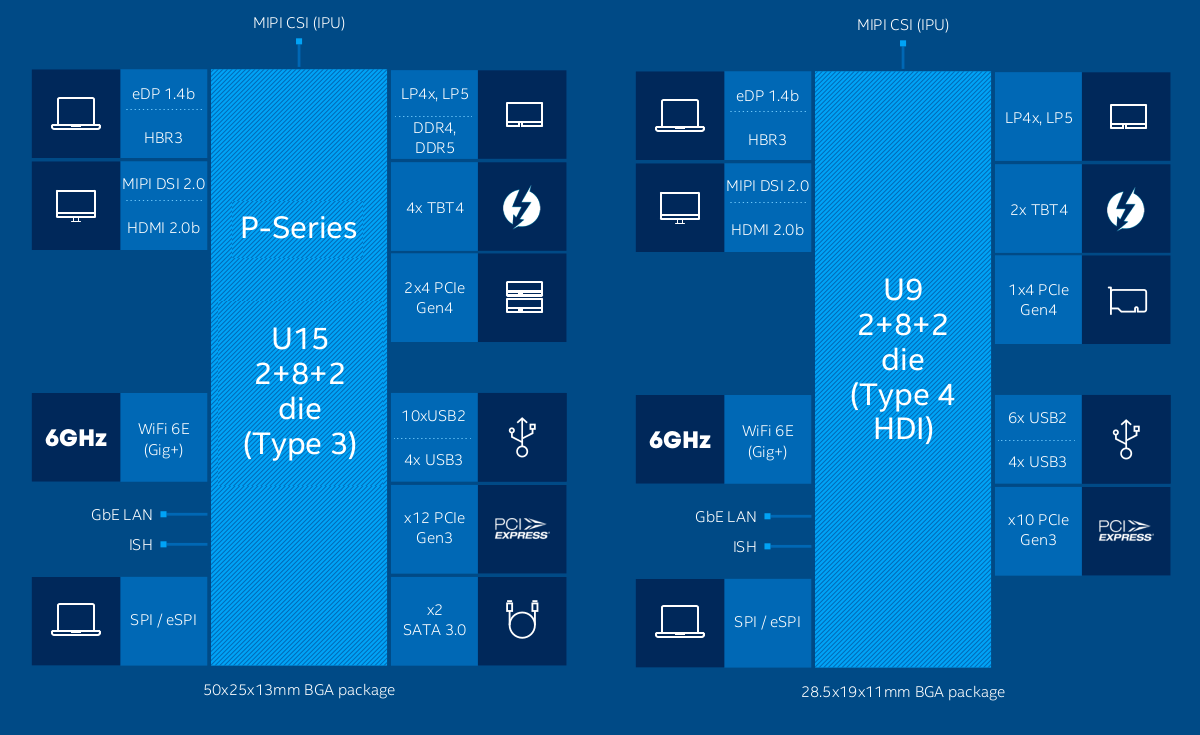A TDP (Thermal Design Power) value in Watts will usually be provided for Intel and AMD processors to help manufacturers design an appropriate thermal solution for a given processor, and it’s often used to estimate power consumption by consumers. But TDP is also often configurable, and manufacturers may decide to increase to decrease the value for higher performance or lower power consumption, so we’ll show you how to check the TDP value, or more exactly PL1 and PL2 power limits in both Windows 11 and Linux (Ubuntu 22.04). Note that TDP is being replaced by PBP (Processor Base Power) in newer processors, with PL1 (Long Duration) corresponding to BPB, and PL2 (Short Duration) to Maximum Turbo Power (MTP), at least on Intel chips. Check the TDP values in Windows 11 You’ll first need to install HWiNFO64 program, then start it leaving all options unticked (default), and go to Control Processor(s) […]
Intel Loihi 2 high-efficiency neuromorphic chip works with the Lava open-source framework
Neuromorphic AI accelerator chips relying on spiking neural networks (SNN), which we’ve seen from companies such as Innatera or Brainchip, will be used more and more in the future as they provide much higher efficiency compared to traditional deep neural networks (DNN) solutions. Intel is also working on SNN, and recently announced the Loihi 2 second-generation neuromorphic research chip with up to 1 million neurons (the human brain has 86 billion of those on average) that delivers up to 175x lower energy to learn a new object instance with similar or better speed and accuracy compared to conventional methods running on a central processing unit (CPU). The new Loihi 2 neuromorphic chip offers the following improvement over the first generation Loihi: Up to 10x faster processing capability (2x for simple neuron state, 5x for synaptic operations, 10x for spike generation) Up to 60x more inter-chip bandwidth achieved through a combination […]
Linux 5.19 Release – Main changes, Arm, RISC-V and MIPS architectures
Linus Torvalds has just announced the release of Linux 5.19. It should be the last 5.xx version, with Linux 6.0 coming for the next cycle: So here we are, one week late, and 5.19 is tagged and pushed out. The full shortlog (just from rc8, obviously not all of 5.19) is below, but I can happily report that there is nothing really interesting in there. A lot of random small stuff. In the diffstat, the loongarch updates stand out, as does another batch of the networking sysctl READ_ONCE() annotations to make some of the data race checker code happy. Other than that it’s really just a mixed bag of various odds and ends. On a personal note, the most interesting part here is that I did the release (and am writing this) on an arm64 laptop. It’s something I’ve been waiting for for a _loong_ time, and it’s finally reality, […]
Intel Meteor Lake mobile processor highlights leaked
Intel Meteor Lake processor family is supposed to succeed the 13th generation Raptor Lake chips itself coming after the current 12th generation Alder lake processors. It is scheduled to launch next year (2023), but we already have some details about the Meteor Lake U, P, and H mobile processors from a leak. Just like most Alder Lake processors, Meteor Lake will be hybrid processors with power and energy-efficient cores, but they’ll also feature new LP E-cores which should stand for “low power efficiency” cores in order to further lower the power consumption while a laptop or mini PC in standby mode. Meteor Lake mobile processors highlights: CPU P cores + E cores + LP-E cores architecture U-series with up to 12 cores P- and H-series up to 14 cores; Up to 6+8 configuration with up to 24MB LLC/core (Note the LP-E cores don’t seem to be part of the main […]
Beelink SEi8/SER3 review – Intel Core i3-8109U and AMD Ryzen 3 3200U mini PCs face off in Windows 11 (part 1)
In the past, new mini PCs were released as a result of new processors coming to market. However, with the pandemic and its consequences on the supply chain, some Chinese manufacturers’ survival response has been to source old processors in order to continue presenting new devices. It could be argued that for this approach to be successful these alternative older processors should at least be comparable in performance terms to the latest processors that are currently, or theoretically potentially, now available. In terms of low-end Intel mini PC processor chronology which started with Bay Trail and then Cherry Trail followed by the Lakes of Apollo and Gemini, the current benchmark is Jasper Lake. A good example of this adaptation to market circumstances is Beelink’s release of their latest additions to their SEi and SER product lines which feature the older Intel Core i3-8109U (Coffee Lake) and AMD 3200U processors respectively. […]
Embedded World 2022 – June 21-23 – Virtual Schedule
Embedded World 2020 was a lonely affair with many companies canceling attendance due to COVID-19, and Embedded World 2021 took place online only. But Embedded World is back to Nuremberg, Germany in 2022 albeit with the event moved from the traditional month of February to June 21-23. Embedded systems companies and those that service them will showcase their latest solution at their respective booths, and there will be a conference with talks and classes during the three-day event. The programme is up, so I made my own little Embedded World 2022 virtual schedule as there may be a few things to learn, even though I won’t be attending. Tuesday, June 21, 2022 10:00 – 13:00 – Rust, a Safe Language for Low-level Programming Rust is a relatively new language in the area of systems and low-level programming. Its main goals are performance, correctness, safety, and productivity. While still ~70% of […]
UCIe (Universal Chiplet Interconnect Express) open standard for Chiplets with heterogeneous chips
We first heard about Chiplet, chips that gather IP or chips from different vendors into a single chip, in 2020 with the now-defunct zGlue’s Open Chiplet Initiative, but the term recently came back to the forefront last month with Intel’s investment into the “Open Chiplet Platform” that aims to offer a modular approach to chip design through chiplets with each block/chiplet customized for a particular function. It turns out there’s now an official standard called the Universal Chiplet Interconnect Express (UCIe) whose specification defines the interconnect between chiplets within a package, and not only backed by Intel, but also AMD, Arm, ASE, Google Cloud, Meta, Microsoft, Qualcomm, Samsung, and TSMC. UCIe defines the Physical Layer (Die-to-Die I/O) and protocols to be used for the chiplet interfaces, currently PCIe and CXL (Compute Express Link), but more protocols will be added to the specification in the future. The goal is to provide […]
Intel launches Alder Lake P-Series and U-Series mobile hybrid processors
Intel first unveiled the most powerful Alder Lake H-Series last year before the launch in January, and also introduced Alder Lake-S desktop IoT processors and Alder Lake U-Series and P-Series mobile IoT SoCs in early January. But now the company has announced the launch of the Alder Lake P-Series (28W) and U-Series (9W and 15 PBP) 12th generation mobile processors designed for “thin-and-light” laptops which should become available around March 2022. The block diagram of the 28W P-Series and 15W U-Series (source: product brief from Intel) shows both offer the same interfaces including eDP 1.4b, HDMI 2.0b, 2x PCIe Gen4, 12x PCIe Gen3, 2x SATA… and the same 50x25x12mm BGA package. But the 9W U-Series comes in a cost-optimized 28.5x19x11mm BGA package that does without SATA interfaces, a lower number of PCIe Gen3 interfaces (10 vs 12), USB 2.0 interfaces (6 vs 10), Thunderbolt 4 interfaces (2 vs 4), and […]


